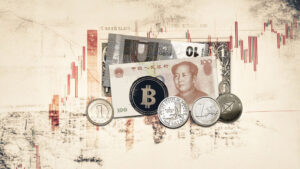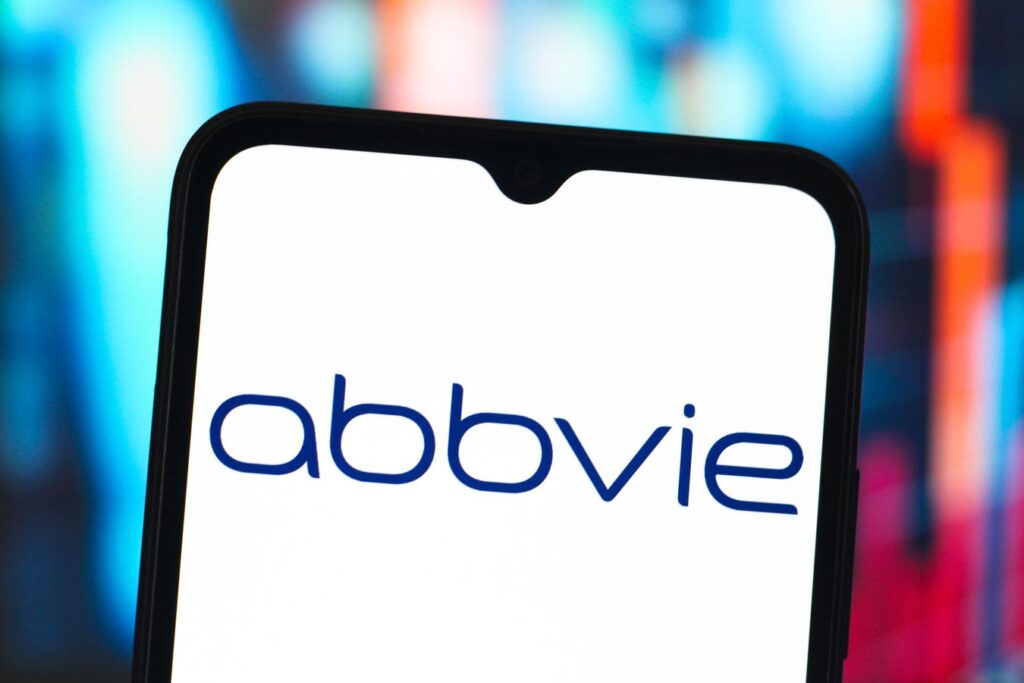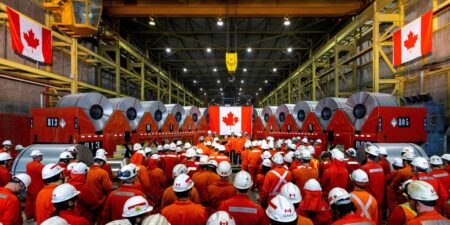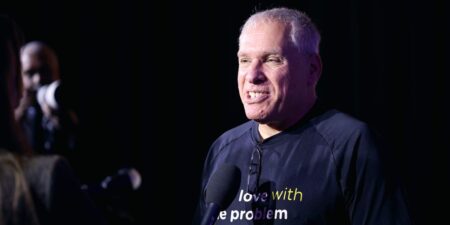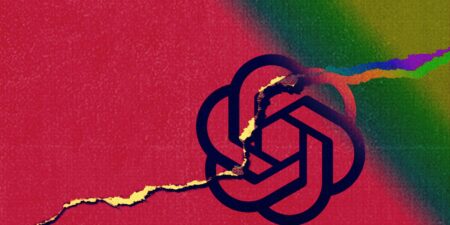AbbVie (NYSE:ABBV) stock has garnered recent attention following the FDA approval of Emrelis for adults with previously treated lung cancer who exhibit an overabundance of the c-Met protein. This protein is known to promote tumor growth and resistance to certain therapies. This positive news coincides with ABBV’s strong stock performance, which has risen nearly 10% in the past six months, notably outperforming the broader S&P Healthcare index, which has declined by 8%.
Contributing significantly to AbbVie’s positive trajectory is the exceptional growth within its immunology portfolio, particularly Skyrizi and Rinvoq. These two drugs demonstrated substantial year-over-year growth of 71% and 57%, respectively, in the first quarter of 2025, building upon their impressive 50% growth in the previous year.
While the stock’s current high valuation introduces a degree of risk, we maintain a positive outlook on AbbVie. This conclusion is based on a comparative analysis of the company’s present valuation against its recent operating performance, as well as its current and historical financial condition. Our assessment across key parameters—Growth, Profitability, Financial Stability, and Downturn Resilience—indicates that AbbVie possesses a strong operating performance and a sound financial condition, as detailed below.
Despite concerns surrounding potential drug price controls, which Wall Street analysts anticipate will likely face legal challenges and be difficult to implement, AbbVie’s specific performance appears robust, largely driven by its successful immunology drugs. However, for investors who seek lower volatility than individual stocks, the Trefis High Quality portfolio presents an alternative – having outperformed the S&P 500 and generated returns exceeding 91% since its inception. Separately, see – Is UNH Stock Now A Falling Knife?
How Does AbbVie’s Valuation Look vs. The S&P 500?
Going by what you pay per dollar of sales or profit, ABBV stock looks expensive compared to the broader market.
- AbbVie has a price-to-sales (P/S) ratio of 5.6 vs. a figure of 2.8 for the S&P 500
- Additionally, the company’s price-to-free cash flow (P/FCF) ratio is 20.9 compared to 17.6 for S&P 500
- And, it has a price-to-earnings (P/E) ratio of 77.6 vs. the benchmark’s 24.5
How Have AbbVie’s Revenues Grown Over Recent Years?
AbbVie’s Revenues have grown marginally over recent years.
- AbbVie has seen its top line grow at an average rate of 0.2% over the last 3 years (vs. increase of 6.2% for S&P 500)
- Also, its quarterly revenues grew 8.4% to $13.3 Bil in the most recent quarter from $12.3 Bil a year ago (vs. 4.9% improvement for S&P 500)
How Profitable Is AbbVie?
AbbVie’s profit margins are around the median level for companies in the Trefis coverage universe.
Does AbbVie Look Financially Stable?
AbbVie’s balance sheet looks weak.
- AbbVie’s Debt figure was $70 Bil at the end of the most recent quarter, while its market capitalization is $321 Bil (as of 5/15/2025). This implies a moderate Debt-to-Equity Ratio of 21.8% (vs. 21.5% for S&P 500). [Note: A low Debt-to-Equity Ratio is desirable]
- Cash (including cash equivalents) makes up $5.2 Bil of the $136 Bil in Total Assets for AbbVie. This yields a poor Cash-to-Assets Ratio of 3.8% (vs. 15.0% for S&P 500)
How Resilient Is ABBV Stock During A Downturn?
ABBV stock has been much more resilient than the benchmark S&P 500 index during some of the recent downturns. While investors have their fingers crossed for a soft landing by the U.S. economy, how bad can things get if there is another recession? Our dashboard How Low Can Stocks Go During A Market Crash captures how key stocks fared during and after the last six market crashes.
Inflation Shock (2022)
- ABBV stock fell 23.3% from a high of $174.96 on 8 April 2022 to $134.21 on 30 September 2022, vs. a peak-to-trough decline of 25.4% for the S&P 500
- The stock fully recovered to its pre-Crisis peak by 7 February 2024
- Since then, the stock has increased to a high of $216.66 on 10 March 2025 and currently trades at around $180.
Covid Pandemic (2020)
- ABBV stock fell 34.0% from a high of $97.79 on 12 February 2020 to $64.50 on 23 March 2020, vs. a peak-to-trough decline of 33.9% for the S&P 500
- The stock fully recovered to its pre-Crisis peak by 30 June 2020
Putting All The Pieces Together: What It Means For ABBV Stock
In summary, AbbVie’s performance across the parameters detailed above are as follows:
- Growth: Neutral
- Profitability: Neutral
- Financial Stability: Weak
- Downturn Resilience: Extremely Strong
- Overall: Neutral
In addition: See Buy or Sell AbbVie Stock.
AbbVie’s performance, when initially compared to the benchmark S&P 500 index across the aforementioned parameters, appears moderate. However, a closer examination of the adjusted figures reveals a more compelling picture. For example, the company boasts a robust adjusted net income margin of 32%. Furthermore, its price-to-earnings (P/E) ratio, based on adjusted trailing earnings of $10.27 per share, stands at a reasonable 18x.
While this 18x multiple is higher than the stock’s three-year average P/E ratio of 14x, we believe this premium is warranted due to the exceptional growth within AbbVie’s immunology portfolio. Consequently, we view ABBV stock as a favorable investment at its current levels. Adding to this positive outlook, the average analyst price target of $211 suggests a potential upside of over 15% from the current price.
While ABBV stock looks promising, investing in a single stock can be risky. On the other hand, the Trefis High Quality (HQ) Portfolio, with a collection of 30 stocks, has a track record of comfortably outperforming the S&P 500 over the last 4-year period. Why is that? As a group, HQ Portfolio stocks provided better returns with less risk versus the benchmark index; less of a roller-coaster ride as evident in HQ Portfolio performance metrics.
Read the full article here



